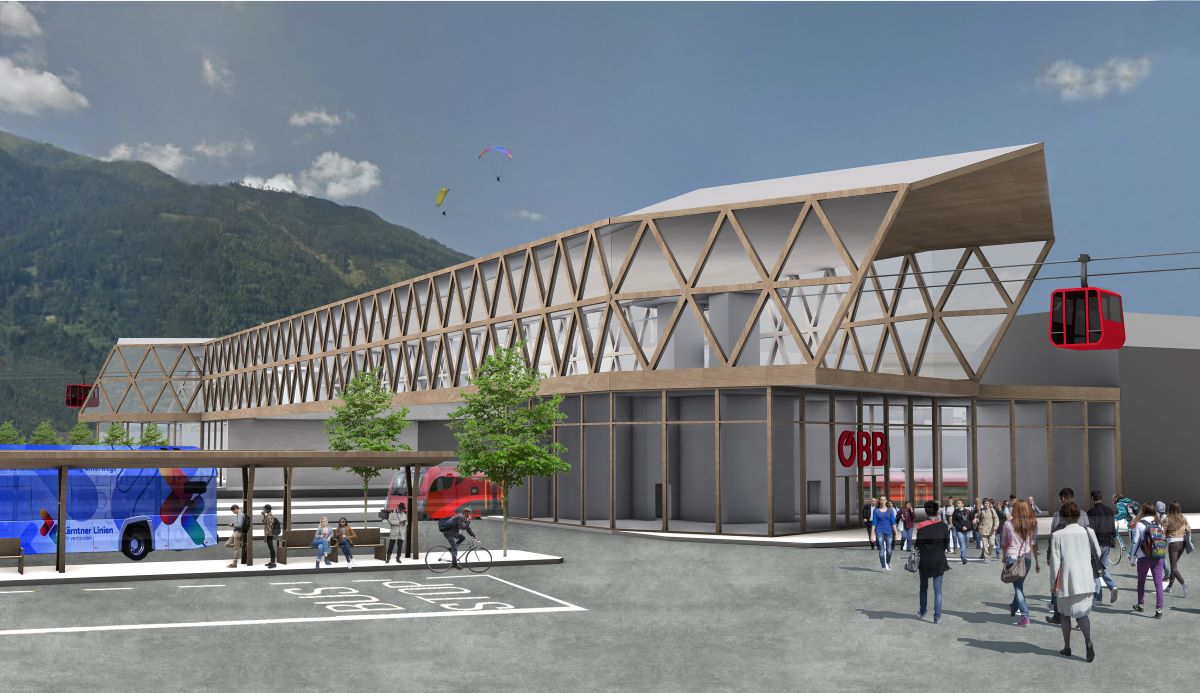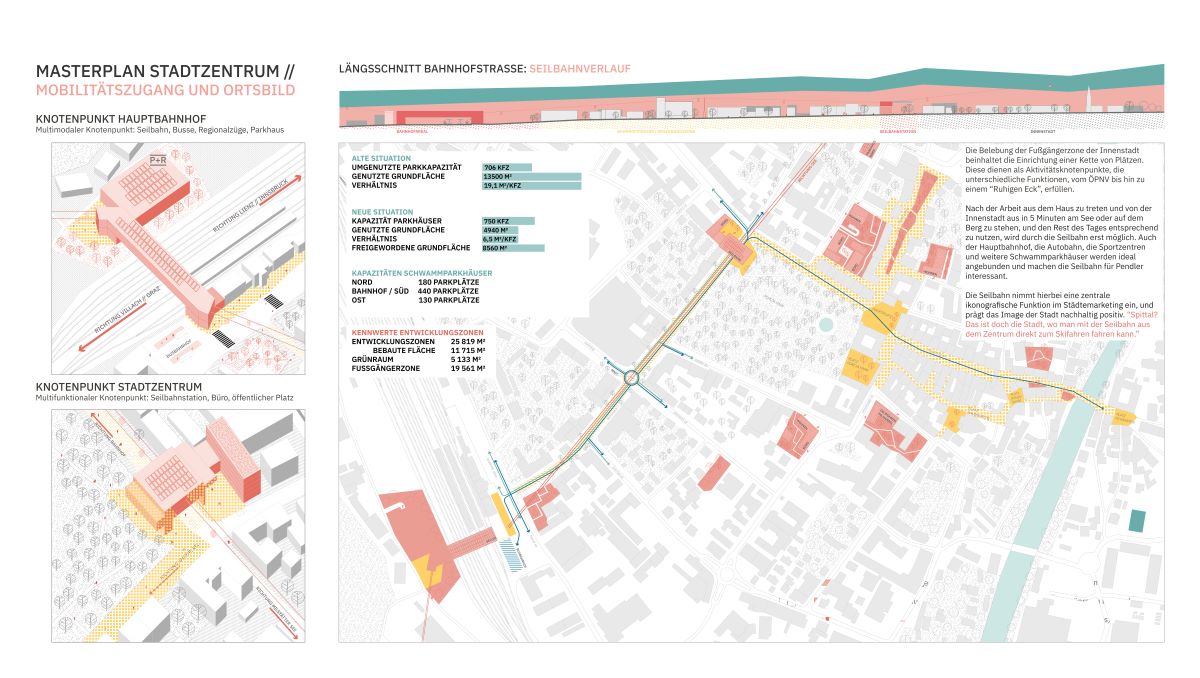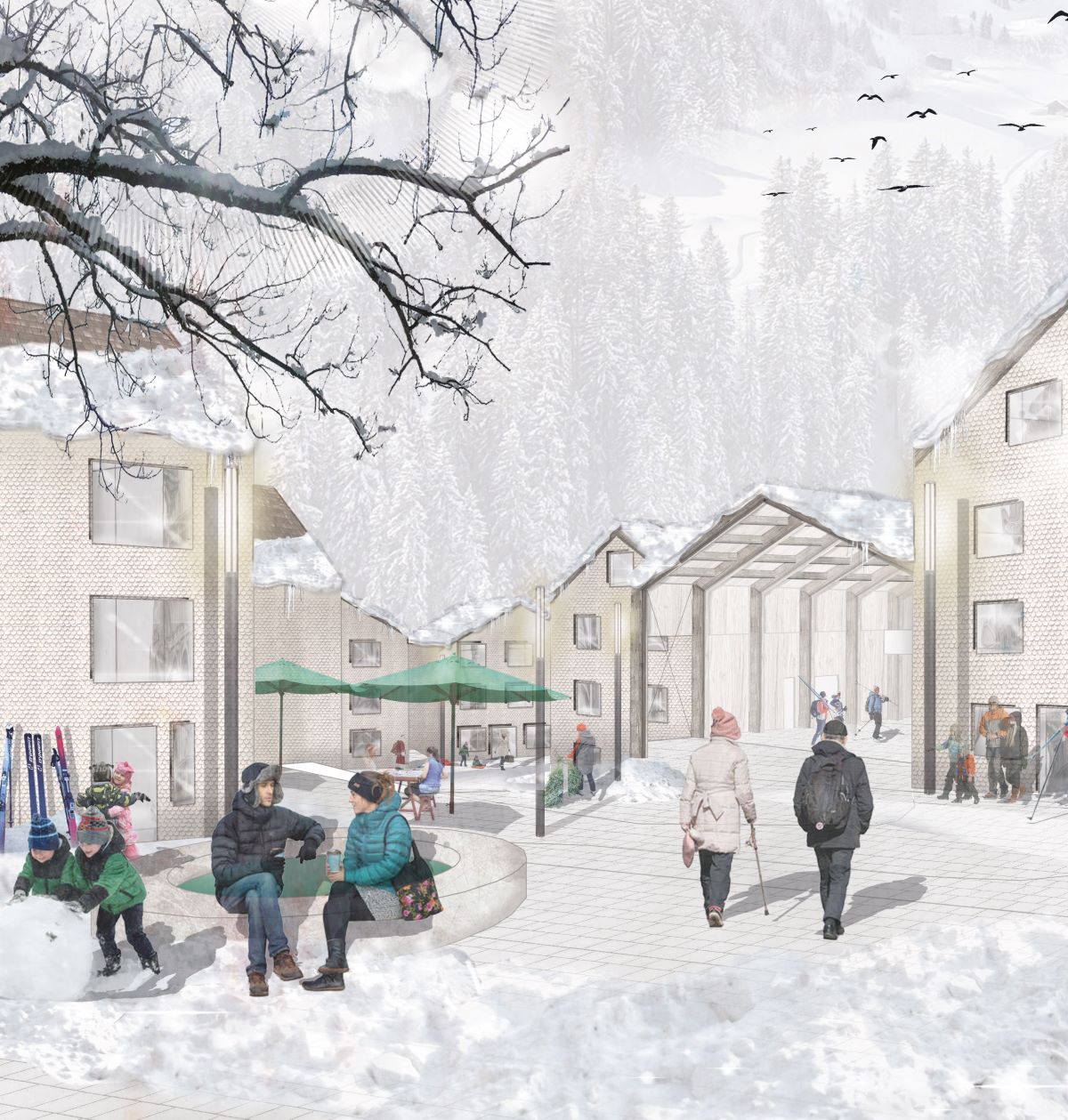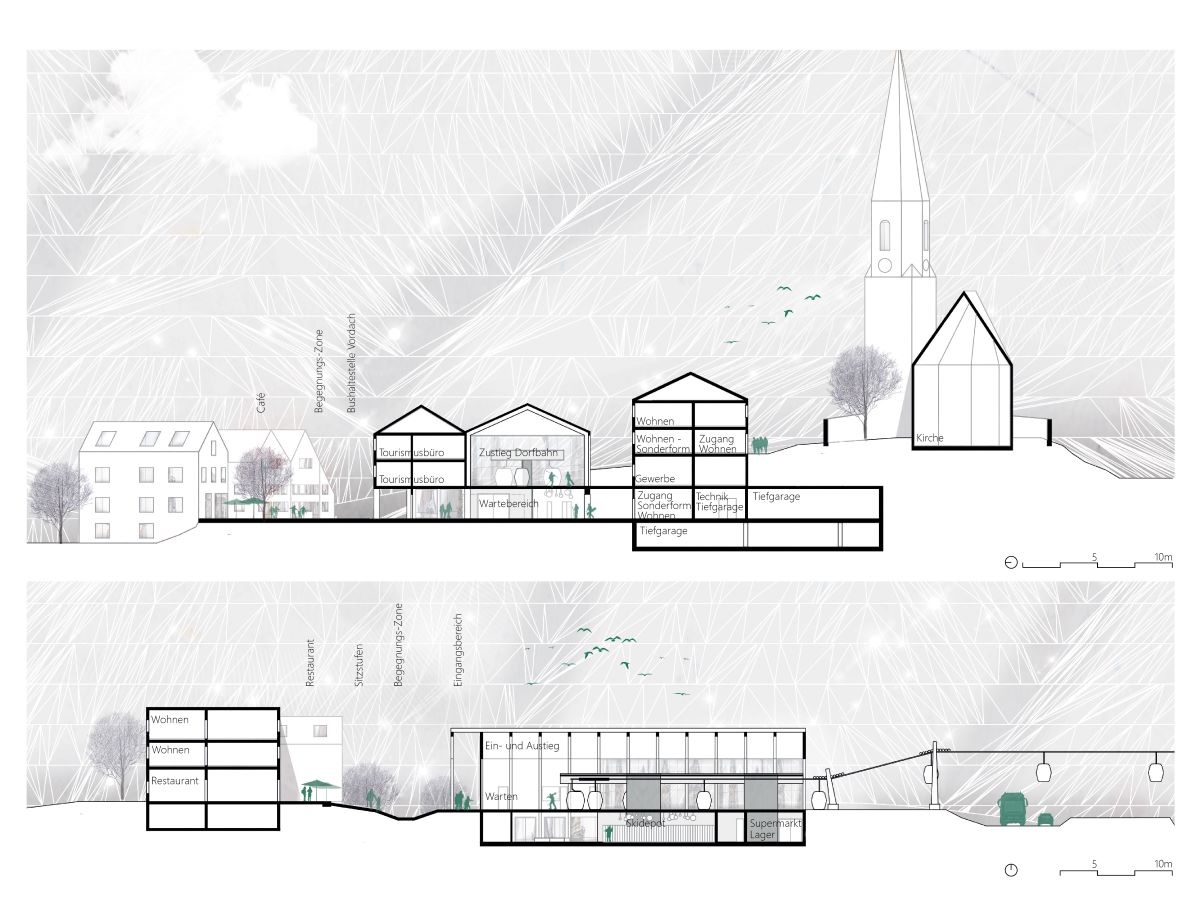
Cities, SI Urban 1/2024
The potential of urban cable cars in towns
The scientists from TU Wien highlight the potential of urban planning concepts in the Alpine region. One example is the municipality of Schröcken, and another is the municipality of Spittal an der Drau, both in Austria.
As part of a master‘s thesis, a concept was developed for these municipalities on how a cable car station could integrate into the public transportation network and tourism offerings.
Overview
of the concept for Spittal an der Drau

Cable car in Spittal an der Drau
The new transportation concept for Spittal an der Drau aims to calm inner-city traffic and make the center more attractive for pedestrians and cyclists by incorporating green spaces. Currently, only two percent of the population uses public transportation.
According to the TU Wien concept, the new main train station will become a hub. Part of this plan includes a cable car to improve connectivity to the city center and connect other locations such as sports centers and parking garages.
This concept aims to enable people to forgo their cars in the city center. Fewer cars in the city center also mean that the area becomes more appealing for businesses. Thus, the cable car would provide added value for both locals and tourists.
Concept
A cable car station at the village square in Schröcken (as seen in the covered access) could expand and make it more appealing.

Cable car in Schröcken
The municipality of Schröcken comprises nine districts along the main road. A village cable car in Schröcken aims to not only connect to the Arlberg ski area but also revitalize the town center through the cable car station.
A covered entry area would also expand the village square and transform it into a meeting zone. There are two proposed routes for the cable car, both of which would start directly in the center of Schröcken.
Although investors have already been found for the cable car, authorities have yet to decide on the exact route. However, discussions about the development of the town center have been ongoing since 2010.
Visualization
of the village cable car in the area of Schröcken

Traffic calming and public connectivity
According to TU Wien, Schröcken lacks public meeting points and recreational areas. The feeder cable car could significantly influence the design of these areas, making deliberate planning of the valley station crucial.
It should connect the various sections of the municipality as a focal point and also serve as an event center. The resulting meeting zone created by the cable car‘s construction also integrates with public transportation and eliminates the need for individual car trave to the city center. The town center is easily accessible on foot from the bus stop near the cable car station.
The concept deliberately excludes a connection to the Naßlegg district to avoid weakening the core of Schröcken. This approach could strengthen the town center and make it more attractive for both locals and tourists.
In both municipalities, the cable car could improve connections to public transportation. Furthermore the cable car will serve as a new hub, revitalizing the communities.







